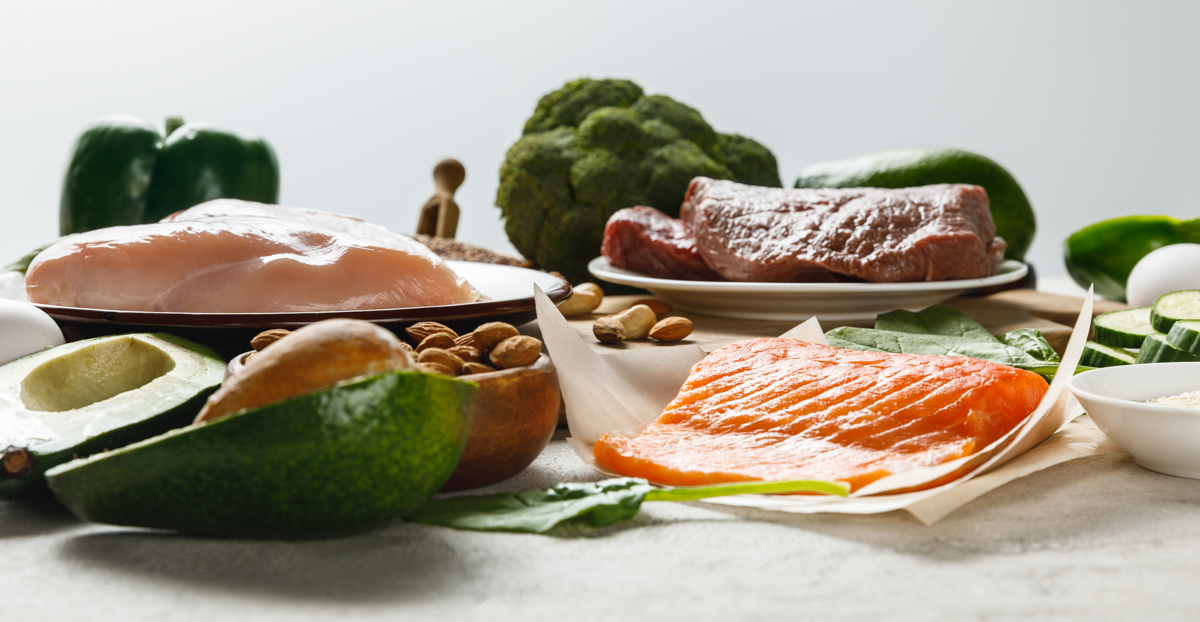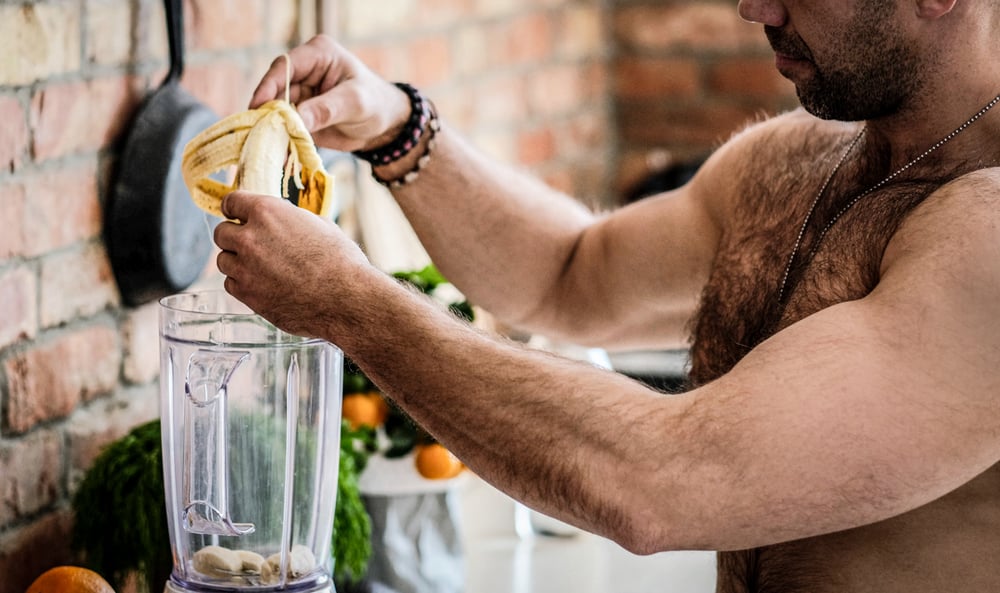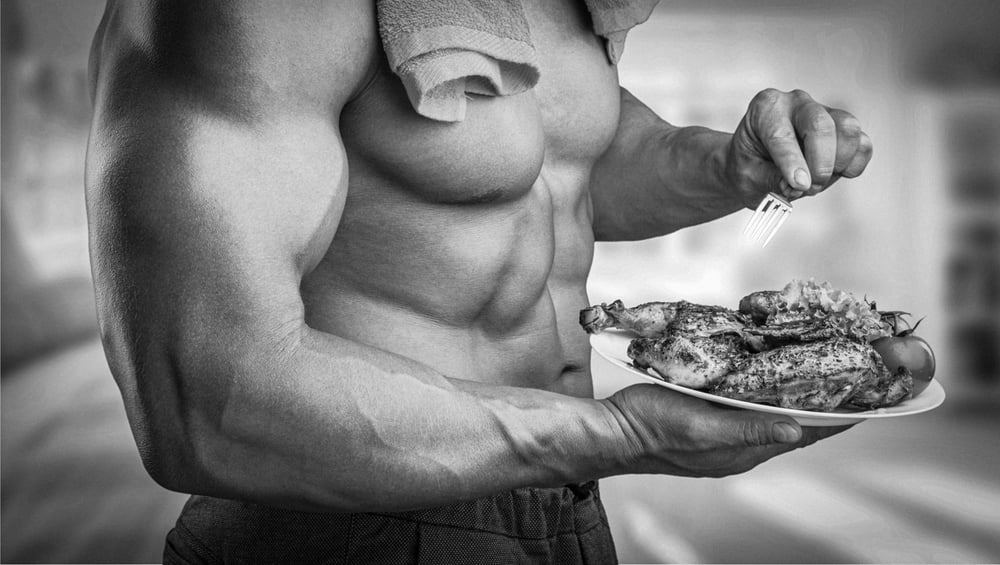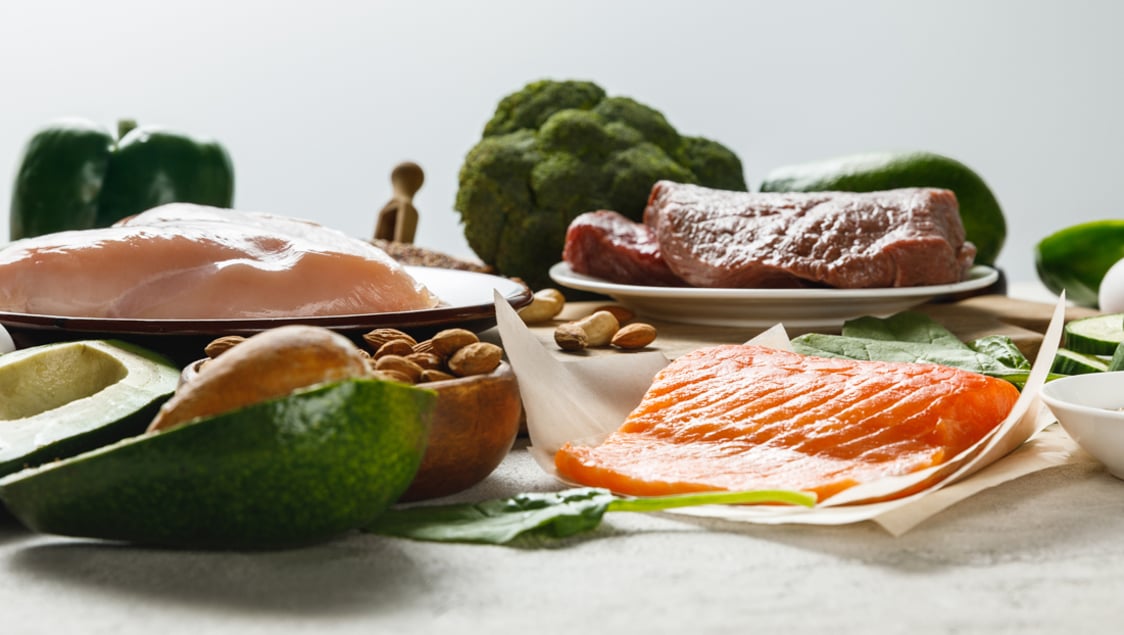
Issue 203
March 2024
Whether you're fighting in the cage or just fighting for better health, Ray Klerck explains why calories don’t matter, but nutrient profiles do if you’re looking to unlock your high-performance potential.
At the heart of any fighter’s engine room is the quality of nutrition a fighter receives, which impacts their ability to perform, recover, and maintain optimal health. Sure, young upstarts, like Raul Rosas Jr., can probably get away with poor diet, and so can favorites like Paddy Pimblett, well, up to a point. However, the fight game’s big hitters, like Jones and McGregor, eventually seem to turn toward higher quality foods to give them the necessary longevity. Even if you go on and off the low-quality foods, this can be terrible for both body and mind. People who yo-yo diet fall into a weight cycle that can be hard to break, according to a study in the journal Qualitative Health Research. This approach created stress and shame, and the participants regained more weight than what they started with. People who successfully broke this pattern did so by focusing on eating for their health rather than counting calories and exercising for fun rather than for a calorie burn. There’s the rub: high-quality nutrition wins every time, even when it’s a mental game at stake.
IMPLEMENTING HIGH-QUALITY NUTRITION
With a professional fighter’s training load, you’d imagine they could nearly eat what they like, but you’d be wrong. Even if you’re training for a few hours at a time, that’s not enough to offset a poor diet. After tracking 100,000 people for 30 years, the healthy upticks gained from regular exercise aren’t enough to offset the cardiovascular disease risks linked to drinking sugar-sweetened beverages, found a paper in The American Journal of Clinical Nutrition. Sugary drinks are the largest source of added sugars in the American diet, and this shows your ticker won’t play ball even if you’re down to your fight weight. Take home message: drink water and eat high-quality foods, no matter how lean you might be. This approach should focus on whole foods, such as lean proteins for muscle repair and recovery (chicken, fish, legumes), complex carbohydrates for sustained energy (quinoa, sweet potatoes, oats), healthy fats for hormonal health and inflammation reduction (avocado, nuts, olive oil), and a wide variety of fruits and vegetables for vitamins and minerals essential for optimal fight conditioning. You can't expect a championship performance on a diet of dollar-menu dreams.

HOW CAN YOU TELL?
To make sure you’re eating high-quality foods, it’s more about focusing on what to avoid since almost 60% of the average American diet is now ultra-processed foods. Finding foods to avoid is simple. If a food has a jingle – keep away. If teenagers cook it, you may not even want to consider it food. If it wasn’t grown or farmed and your grandad didn’t eat it, or you can’t pronounce it, leave it for someone else to eat. Some processed foods can be passable, but an easy way to identify these is by their own transparency at the front of the packaging. After analyzing tens of thousands of packaged foods for 16 years, front-of-package labels were linked to improved nutrition content, found a paper done at North Carolina State University. Processed foods with something to hide tend to hide their failings in their ingredient lists placed at the back of the product, where they’re hoping you won’t bother looking. Don’t be fooled by this nutritional parlor trick.
FOOD QUALITY FACTS
By focusing on food quality, not only will your fight performance and ability to make weight improve, but you’ll also amplify your training consistency because you’ll be less likely to get sick. When people cut out processed foods and adopted more of a vegan or ketogenic-based diet for just two weeks, their innate immune systems got a serious bolstering, found a paper in Nature Medicine. They didn’t need to limit the number of calories eaten, and their gut bacteria improved, but the big takeaway was how quickly the immune system responded to an improved diet. By focusing on the foods that deliver the best nutrition, you can fend off sickness and train more frequently. And if you think kale tastes terrible, wait until you taste defeat.

THE WORLD’S MOST NUTRIENT-DENSE FOODS
Thankfully, the superfood label is used less and less because it’s misleading, and most natural foods are incredible in their own right. That said, some foods stand out head and shoulders above the rest.
- Salmon - A 100g serving of salmon contains approximately 2.6 grams of Omega-3 fatty acids, fulfilling over 100% of the recommended daily intake (RDI) for EPA and DHA, essential nutrients for heart and brain health. Avoid the farmed variety. It’s incredibly toxic.
- Kale - Just one cup (67 grams) of raw kale provides about 206% of the RDI for vitamin A, 134% of the RDI for vitamin C, and a whopping 684% of the RDI for vitamin K, making it a nutrient powerhouse for immune support and bone health.
- Seaweed - A single serving (approximately 8 grams) of seaweed can offer about 500% of the RDI for iodine, a crucial nutrient for thyroid function and metabolic health.
- Sweet potatoes - These are esteemed for their high beta-carotene content, providing over 400% of the RDI for vitamin A per cup, essential for vision, immunity, and skin health. Fighters need carbs, so quinoa, barley, and farro are in close seconds.
- Blueberries - A 100g serving of organic blueberries delivers 24% of the RDI for vitamin C and 36% of the RDI for vitamin K, alongside potent antioxidants like anthocyanins, which support cardiovascular and cognitive health. If you can’t get organic, give these a miss because they’ll do more harm than good.
- Eggs - One large egg (about 50 grams) provides 28% of the RDI for selenium, 10% for vitamin B12, and 15% for vitamin B2 (riboflavin), making it an excellent source of nutrients for energy metabolism and antioxidant defense.
- Liver (Beef) - A 100g serving of beef liver offers an impressive 1,049% of the RDI for vitamin A and over 1,500% of the RDI for vitamin B12, supporting vision, skin health, and energy production.
- Sardines - A 100g serving of sardines delivers over 200% of the RDI for vitamin B12, 24% for vitamin D, and significant Omega-3 fatty acids, contributing to bone health, immune support, and cardiovascular health.
- Microgreens – These offer an intense nutrient profile, providing up to 40 times more vitamins C, E, and K than their mature plant versions, making them a tiny yet mighty addition to any diet.
- Almonds - A 28g serving (about 23 almonds) provides 37% of the RDI for vitamin E, 19% for magnesium, and 3.5 grams of fiber, promoting heart health, antioxidant protection, and digestive health.

WHY FIGHTERS NEED A UNIQUE DIETARY APPROACH
Fighters aren’t any old athletes. A fighter could survive on a swimmer’s diet and perform well, but this approach would leave them short-changed. Fighters have an incredibly high training load, possibly higher than most other sports. This puts them at risk of creating a suppressed immune system, which is made worse, considering training can cause scratches, cuts, and bruises that can quickly become infected. Moreover, training in close contact with your sparring partners means the risk of transmittable diseases like the common cold will always be high. A fighter’s immunity should always be at the forefront, so nutrition quality always matters. Part of the solution to this involves choosing locally sourced and organic foods when possible. This not only means more nutrients, but it supports local economies. The transition to high-quality, environmentally conscious nutrition among fighters can be a powerful model for broader societal change. Fighters, especially those with a platform, can influence fans and communities by showcasing the benefits of sustainable eating habits for personal health and performance and the planet. Eating like a champion isn't just about the food; it's about making choices that don't make your body want to tap out. Train hard, eat smart, and maybe lay off the mystery meat.










